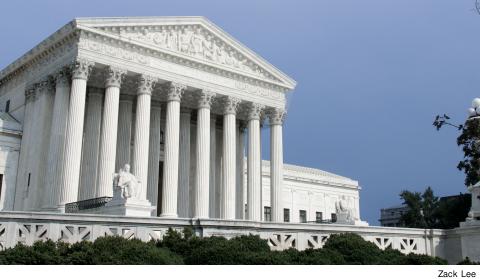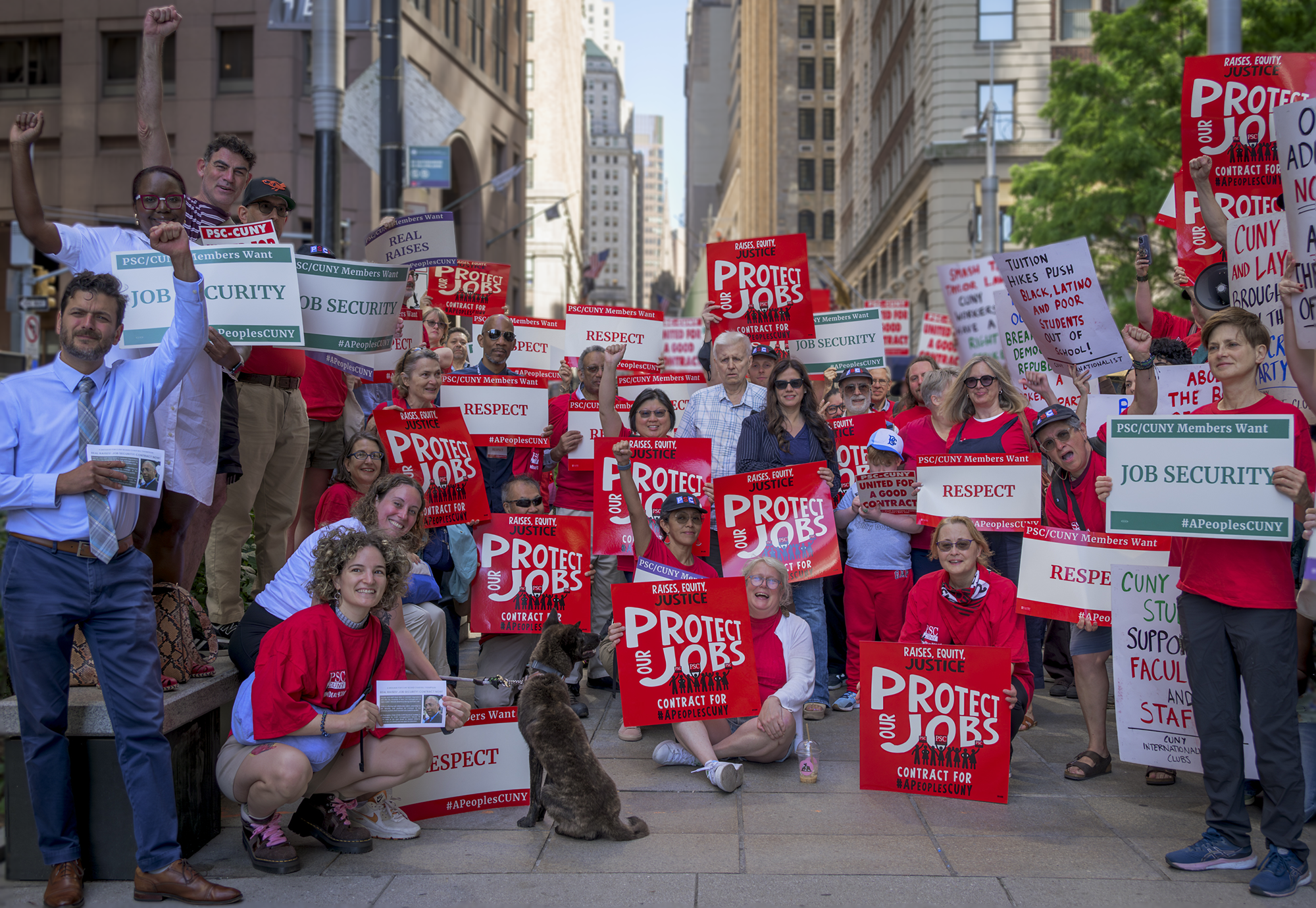
Last January, public-sector labor activists anxiously stood outside the Supreme Court building in the piercing Washington, D.C., winter winds. Inside, the nine justices heard arguments regarding the fate of government worker unions in the case of Friedrichs v. California Teachers Association.
There was hope that morning among the assembled unionists that one of the five conservative justices would break from political motivations and hold that any decision crippling the ability of unions to represent their members was, in fact, an affront to constitutional freedoms. But the news that soon came from the people inside the hearing was bleak. The lawyer for Rebecca Friedrichs, a California teacher who argued that a four-decade precedent requiring agency shop fee payers in a bargaining unit should be overturned, was grinning like a winner. The line of questioning from the five conservative justices strongly suggested that as a majority coalition they believed the basic union protections that cover agency shop workers, such as collective bargaining and benefits, were inherently political, and thus forcing agency shop fees on an individual was a violation of a person’s free speech.
A CLOSE CALL
It seemed nearly assured that by June the court would rule the agency shop fee system for public sector unions unconstitutional, enforcing a nationwide right-to-work regime. For public worker unions, including the PSC, that would have meant not only a potentially significant blow to union finances, but would have also put those unions into a perpetual state of signing up new members, and distracting organizers from day-to-day business and other activities. Public-sector unions had spent months planning for the new reality, and editorial pages had already written obituaries for the American labor movement.
Fate intervened. With the death of Justice Antonin Scalia coming before a decision was rendered, Friedrichs ended in a 4-4 deadlock, and the evenly split court eventually denied that the case needed to be reheard again in front a nine-member court, as Friedrichs requested. What had seemed like a signed and sealed victory for the anti-union movement was quickly undone. Had Scalia’s sudden death not occurred, unions like the PSC would most likely be spending the days and weeks ahead reworking budgets and making efforts to sign up agency fee payers as full members.
There’s no final victory for public-sector labor just yet and it’s important for public sector unionists to understand how deeply entrenched the right-to-work litigation movement is.
The movement to eliminate the agency shop fee system dates back to the 1977 Abood v. Detroit Board of Education Supreme Court decision, in which all nine justices upheld the right of public-sector unions to charge non-members an agency shop fee to cover “collective bargaining, contract administration and grievance adjustment purposes.” Over time, corporate-backed interests have sought to undermine organized labor in a variety of ways, including moving manufacturing overseas and stymieing efforts to organize new workers in the retail and service sectors. A part of that effort has included moves at the state level to institute “right-to-work laws,” eliminating the requirement for agency shop fees. Half of the United States has right-to-work laws at the state level, including the entirety of the traditionally non-union American South and even in union strongholds such as Michigan.
IN THE CROSSHAIRS
But the entirety of the public sector has been the target of the right-to-work movement for years, and central to that campaign is the effort to overturn Abood. That movement was partially successful with the 2014 Supreme Court case Harris v. Quinn, which undid the agency shop fee requirement only for a narrowly defined set of home healthcare workers. As a result, organized labor largely saw Harris as a sign of what was to come. With Friedrichs looming, it seemed that the court would institute a right-to-work regime nationally for all teachers or even all public-sector employees.
Even without Friedrichs, groups like the National Right to Work Legal Defense Foundation and the Center for Individual Rights continue a legal and legislative campaign.
In fact, here in the state of New York, there is already another lawsuit at the federal level that is meant to travel up to the Supreme Court to attempt, once again, to impose right-to-work on public-sector unions: Berman v. Public Employees Federation, in which Zachary Berman, a hearing officer for the Office of Temporary and Disability and Assistance, insists he should be exempted from an agency shop fee. Unionists around the country, especially in New York, will be watching Berman closely as it moves through the federal courts, starting with the state’s eastern district, where it was filed earlier this year. It will likely not be heard before the court until next year.
A CRIPPLED COURT
The present Supreme Court balance might not make Berman seem as ominous as Friedrichs did when it was heard, but the stakes are high and the framework is delicate. The upcoming presidential election will determine whether the Supreme Court will be a viable path for the anti-union litigation movement. President Barack Obama’s pick to replace Scalia, Merrick Garland, has been widely considered to be fairly pro-labor, as his judicial career has been marked by deferring to National Labor Relations Board decisions that find fault with employers against workers. It also seems unlikely that a moderate who has attracted support from both Democrats and Republicans throughout his career would start his high court tenure by axing a significant and long-standing ruling. His appointment has been blocked by Senate Republicans, who have vowed that only the next president should be able to choose the next Supreme Court justice.
Therefore, the outcome of the presidential election, as well as the future partisan balance of the Senate, will be vital in determining what the Supreme Court will look like. Will there be a restoration of the conservative majority that was ready to impose right-to-work nationwide? Or will the new court be more moderate, with a new justice or set of justices not yet ready to destroy a four-decade-old precedent?
Public-sector unions are still considering the possibility that a union-hostile Supreme Court could impose right-to-work with with a case like Berman. Unions are organizing agency shop fee payers and educating them on the benefits of becoming full members. Even without a right-to-work regime, unions can mobilize their rank-and-file if more workers become full members and thus become more involved and take an active role in the labor movement.

